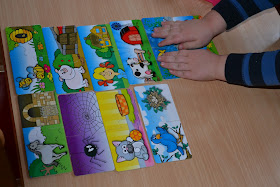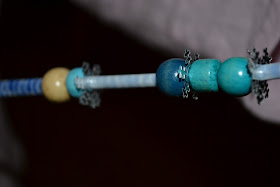Last September 2011, I started a course on Diversity and Equality in childcare practices. The core of the course is based on Louise Derman-Sparks’s Anti-bias Approach. The Anti Bias Approach is focused on what educators and carers can do to work against discrimination. In effect the Anti Bias Approach is saying that by teaching from a social justice perspective that respects and includes all cultures, children’s learning will be more meaningful. For those who might not have heard of Anti Bias Approaches, a short history follows.
The Anti Bias Curriculum (1989) began in the United States from a group of activist educators who were “dissatisfied with current curriculum for helping children learn about diversity” (Derman-Sparks,1989).
 |
| Louise Derman-Sparks |
So, the curriculum occurred in a political and historical context influenced by the USA civil rights movement and the feminist movements in the 1960’s. In other parts of the world similar work also emerged because children’s services staff recognised the importance of dealing with issues of multiculturalism and antidiscrimination in their daily work. This international work grew out of policy changes, human rights movements and activists who were determined to make a difference in the lives of children and families.
The main principles of this way of working with children include:
• construct a knowledgeable, confident self identity (for children to be confident about who they are)
• develop comfortable, empathetic and just interaction with diversity (for children to be accepting of difference)
• develop critical thinking (for children to be critical about injustice)
• and the skills for standing up for oneself and others in the face of injustice (for children to act upon injustice)
Some of you might talk about multiculturalism instead of Anti-bias Approach. It is important to distinguish between both approaches because both ideas play different roles in children’s services and society, but both are equally important. In some ways, Multiculturalism is seen by many as a way of ‘including all cultures’ or ‘celebrating culture’ which gives the impression that all cultures are equally valued in society, but of course they are not. Unfortunately, it is often shaped around Government policy that has the power to allocate resources to institutions. An Anti Bias Approach, on the other hand, has been created specifically in the context of children’s services. This is an approach that is embedded in each service and can be adapted to each method of education, each philosophy, whether you are using A Montessori, Steiner or High Scope way of teaching. This AB approach sets out to recognise the existing bias, discrimination and injustice that many people experience on a daily basis.
One of the great risks to meaningful work around multiculturalism and anti bias work is ‘The Tourist Approach’. Louise Derman-Sparks (1989) discusses the dangers of visiting a culture “for the day” in order to learn about difference, instead of meaningfully sharing cultural experiences, stories and ideas. Vajda in The Anti-Bias Approach in Early Childhood (2001, 31) shows the problems of a ‘Tourist Approach’:
A ‘tourist’ approach to an anti-bias, multicultural curriculum is better than denying the ethnic and racial multicultural nature of (…) society, but it can itself be limiting and even in some cases destructive. It forgets that culture, race, ethnicity and family influence children every day of their lives, not just on one special day of the year. A tourist approach is more likely to encourage stereotypes than to dispel them.
(emphasis added)
So, the challenge for children’s services staff is to seek ways to avoid tokenism and the ‘tourist approach’ and instead share meaningful experiences. In a Montessori environment, a Directress would present the children with the Common Needs of People (sometimes referred to as the Fundamental Needs of Humans). This series of lessons is meant to show students that throughout history, humans have demonstrated the same common needs:food, shelter, clothing, surviving, communication, etc… Maria Montessori believed it was important to study what humans have in common to instill in the child a greater sense of belonging to the universe. In a Montessori classroom, through the curriculum, children learn about similaritites and differences of different people around the world, building a connection and creating a great sense of belonging. The Montessori curriculum strives to create a connection between home and school environment. And shows the children that it is okay to be different, along with the need to respect the differences of others.
The first thing I usually do at the beginning of the year is to get to know the families I welcome in my setting. I asked parents to fill in a few forms asking for the child’s birthplace, the family members and names, the languages spoken at home, their religion and special customs or traditions, the traditional cultural items/food they could share with the other kids etc…
I thought about displaying the information I will gather next year using a large world map in our Montessori classroom as a wonderful visual reminder to the plreschool community that we are all a celebration of cultural differences and similarities. This would be a great way too to involve families even more throughout the year as you study the different cultures around the world.
We also have our Montessori geography curriculum which goes on throughout the year. And one thing I started doing last year, shortly after creating my blog, was to put together “Continental Boxes”. Many of my blogger friends around the world (homeschoolers or preschool teachers) led the way and inspired me to do the same. You can study each continent for a week or a month, depending on how many materials you have and how in-depth you want to take the study. You can check a few of the boxes I have made by linking to my categories on the right hand side of the blog.
Back to my course… I will spare you my whole frustration with this course. My assistant Rachel and I have been studying together and we find the teacher quite narrow-minded and her teaching excessively repetitive. Anyway! When she asked some of us what we have set up in our classroom that would complement the goals of the Anti-bias approach, I mentioned my work on the continent boxes. I explain what they were for, how we use them etc.. Her reaction left me speechless. Apparently, these continent boxes are just what she calls “tokenism”. I looked up on the internet to make sure I got the correct meaning of the word:
1. The policy of making only a perfunctory effort or symbolic gesture toward the accomplishment of a goal, such as racial integration.
2. The practice of hiring or appointing a token number of people from underrepresented groups in order to deflect criticism or comply with affirmative action rules: "Tokenism does not change stereotypes of social systems but works to preserve them, since it dulls the revolutionary impulse" (Mary Daly).
OK. Not what our continent boxes are at all. I have obviously given her the wrong picture and I am definitely going to bring one or two of them with me to the next class to make sure she understands how efficient these boxes can be when trying to open up horizons. I know some clogs from Holland or beret from France might look very tokenistic and might present information about each group much like a tourist would experience it when visiting another country. These could be seen as stereotypes such : “all Latinos dance and eat tacos, all African Americans are athletic and eat collard greens, and all Native
Americans wear headdresses and do war dances, etc”. But the continent boxes are so much more. Continent boxes traditionally contain information, photographs, and objects related to the study of a particular continent. In a complete study of the world, you’ll end up with seven continent boxes. You can have pictures and/or postcards of the flags (though my teacher reckons flags are also very tokenistic!!!), people, places, animals, plants, and culture of each continent. There could be specific categories in each box such as the food, artwork, or musical instruments of a particular continent. We all add objects we find to represent the continent such as plastic animals and plants, real money and stamps, souvenirs, miniature dolls in costume, etc… Is this tokenism? What do you think? Is she right? Am I wrong? Am I the one who is narrow-minded? Am I kidding myself?















































